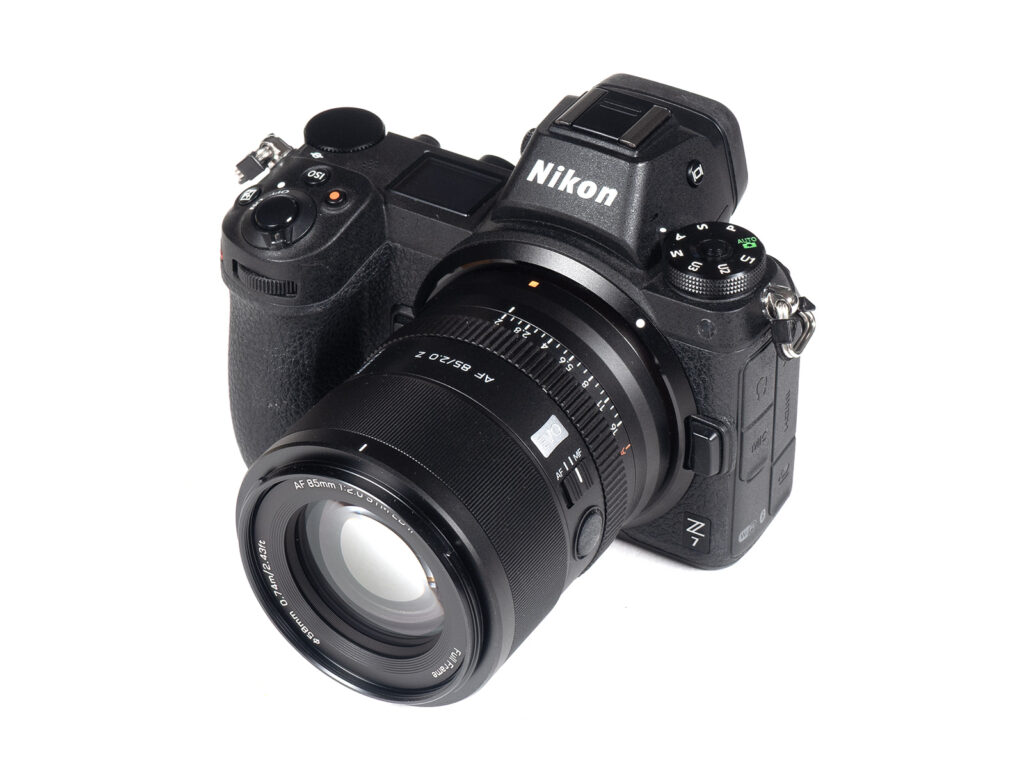Yes, we reviewed the Viltrox AF 85mm f/2 EVO Z in E-mount already, but there’s also a Z-mount version now, so let’s check it out. For obvious reasons, we’ll take our E-mount review as a base here as well.
The new EVO lineup sits in between the Viltrox Air and Pro lenses, so it gives a little and takes a little between these two poles. It’s highly competitively priced at just 275 USD / 315 EUR / 265 GBP / 399 CAD / 45,400 JPY.
Mechanically, there isn’t much of a difference compared to PRO lenses, but at least this first EVO lens settles on a more moderate speed of f/2 compared to the 85mm f/1.4 PRO. While some may frown upon moderately fast prime lenses, there are a couple of benefits. The most obvious one is size and weight. As a rule of thumb, you double the weight and size (volume) with each extra stop. The 85mm f/2 EVO is almost tiny compared to an 85mm f/1.4 lens.
The build quality is impressively high. Unlike the AIR lineup, the lens body is made of metal, including the very smooth focus ring and the de-clickable aperture ring. It also features a (rather noisy) customizable Fn-button. There’s also an AF/MF switch on the lens. In terms of weather-sealing, there’s just a mount gasket. A barrel-shaped lens hood is part of the package.
The 85mm f/2 uses an STM motor for focusing. While this isn’t the latest and greatest motor type, it works fine regarding both speed and quietness. It’s not a sports lens, though.

| Specifications | |
|---|---|
| Optical construction | 10 elements in 8 groups (2x ED, 2x HR) |
| Number of aperture blades | 9 |
| min. focus distance | 0.74m (max magnification: 0.13x) |
| Dimensions | φ69 × 78mm |
| Weight | 360g |
| Filter size | φ58mm |
| Hood | barrel-shaped (bayonet mount, supplied) |
| Other features | Aperture ring (de-clickable) Fn custom button Firmware updates via USB-C/Bluetooth Mount gasket |
Distortions
The lens produces a native image distortion of ~0.7% pincushion-style. This is quite low and usually not an issue. On the downside, you’ll have to live with this because the 85mm f/2 EVO does not have a built-in correction profile for distortions. Eventually, it’ll be available for Photoshop users for RAW conversions, though.

Vignetting
The vignetting characteristic is typical for a lens in this class. At f/2, there’s a very noticeable light falloff of 2 EV (f-stops). This has eased substantially at f/2.8, and the issue is mostly gone at medium aperture settings.
Unlike the E-mount version, vignetting correction IS available in Z-mount. It shaves off about 1 EV (f-stop) at f/2, and the vignetting is mostly gone from f/2.8 in this case already. Please note that the tone curve is a little different on Nikon (vs Sony) so the figures aren’t identical between the systems.

MTF (resolution) at 45 megapixels
The Viltrox AF 85mm f/2 EVO produced superb resolution data in our lab. The broader center quality is already outstanding at f/2. The outer image field isn’t quite as impressive but still manages a very good quality at this setting. Stopping down has a minimal effect on the center, but the border/corner quality does gradually improve until reaching a peak at f/4. Diffraction is the limiting factor beyond.
The centering quality of the tested sample was good. The field curvature is flat.
There are marginal deviations compared to our E-mount review, but the sensor is different, and we are also using slightly different conversion parameters in Z-mount, and there’s always a little sample-to-sample variation even in the best of cases.
Please note that the MTF results are not directly comparable across the different systems!
Below is a simplified summary of the formal findings. The chart shows line widths per picture height (LW/PH) which can be taken as a measure of sharpness. If you are keen to know more about the MTF50 figures, you may check out the corresponding Imatest Explanations.
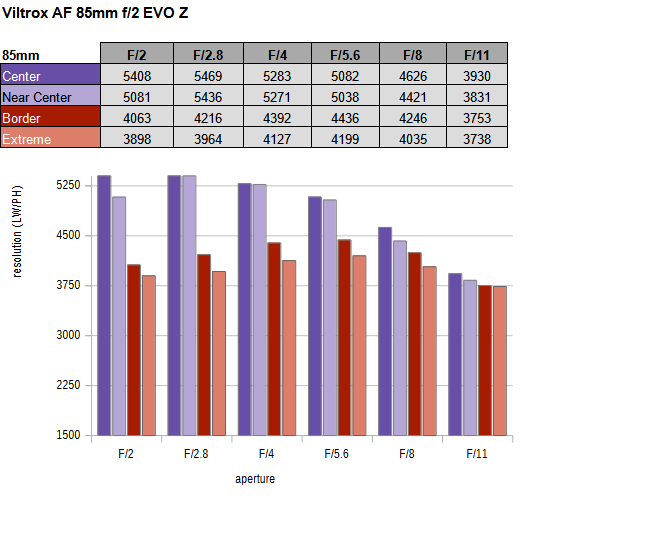
Chromatic Aberrations (CAs)
Lateral CAs are low at all aperture settings even without corrective measures.

Bokeh
A fast medium tele lens isn’t just about sharpness but also about the out-of-focus rendering, aka the bokeh – so let’s take a look.
The Viltrox lens doesn’t use any aspherical elements, so it’s not surprising that out-of-focus highlights are very clean. There’s just a hint of outlining at the disc edges, which increases slightly when stopping down.
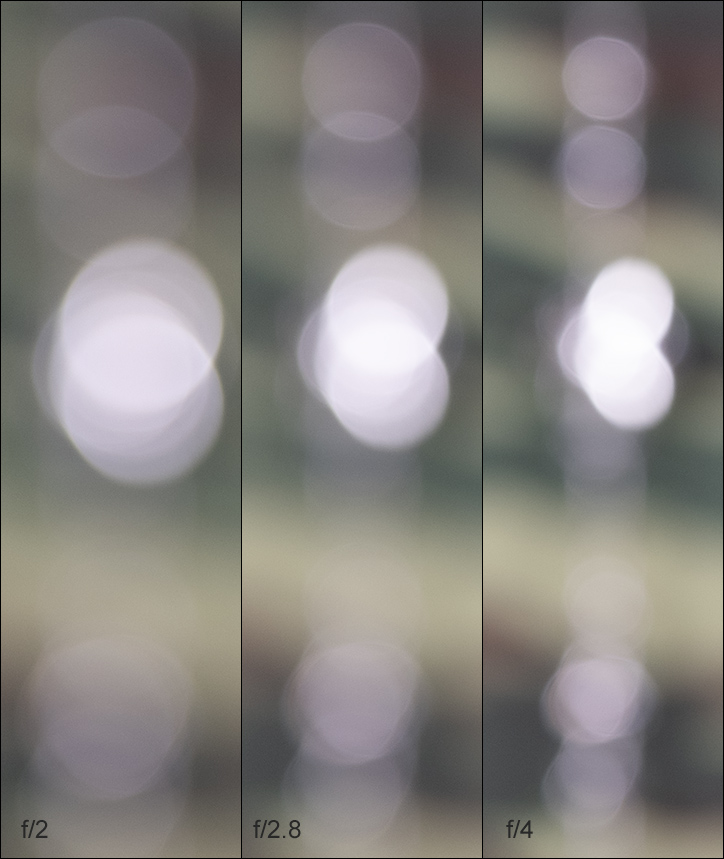
The above applies to the broader center. However, the highlights deteriorate to “cat eyes” the more they are positioned towards the borders/corners – this is a mechanical effect related to the size of the front opening of a lens. This is, as usual, most obvious at maximum aperture. Stopping down to f/2.8 restores the zone with circular highlights substantially, and they are also restored in the corners by f/4.



The blur in the focus transition zone is quite smooth in the image background (shown to the left below) and only slightly “shadowy” in the less important foreground (to the right).
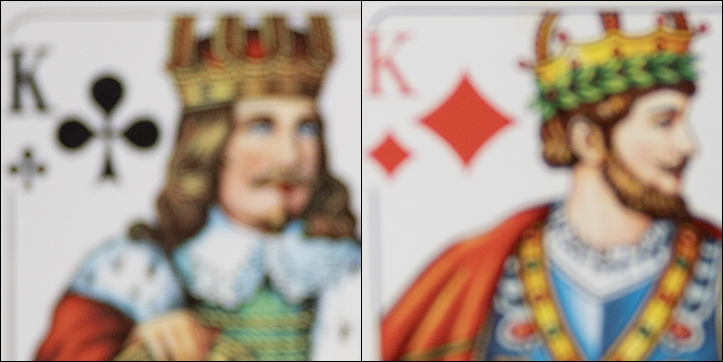
Bokeh Fringing / LoCA
LoCAs, or bokeh fringing, is a color fringing effect on the Z-axis. It shows up with a purplish tint in front of the focus point and a greenish tint behind – and it’s nearly impossible to fully correct in post.
As you can see below, the Viltrox lens shows some color fringing at f/2 with a bit of a greenish tint beyond the focus point. There’s barely any tint in front of the focus point, though. Stopping down to f/2.8 reduces the fringing, and it’s mostly gone from f/4.
You may also notice that the focus point shifts very slightly to the rear when stopping down. However, this has no practical relevance.
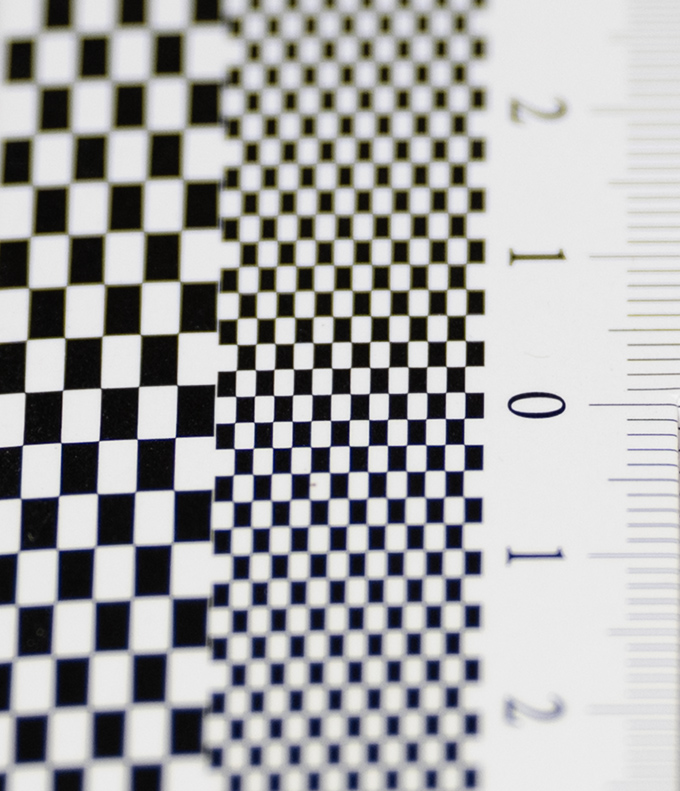

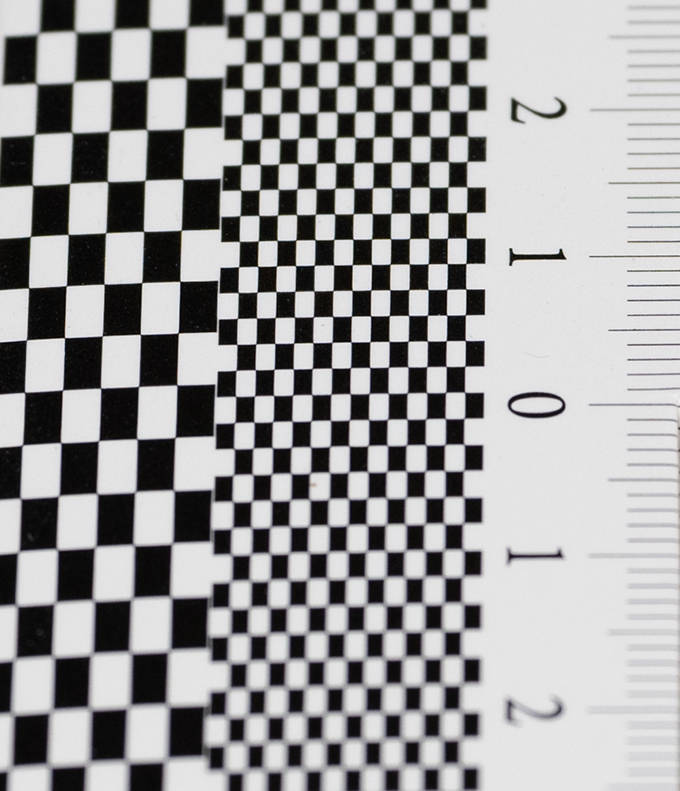
Competition
There are a few high-speed 85mm lenses available in Z-mount. The most obvious one is the Nikkor Z 85mm f/1.8 S, of course. It may be marginally better, but there isn’t a hell of a lot between them. And the Nikkor is heavier and 3x more expensive (…). Then there’s the Meike AF 85mm f/1.8 Pro (review coming soon), which we won’t rate quite as high in most aspects. 7Aritsans, AstrHori and Yongnuo also have 85mm f/1.8 AF lenses. We haven’t tested them … but we are skeptical that they can reach the Viltrox 85mm f/2 EVO.
Sample Images
Note: The light conditions were a bit harsh at the time of the shooting. Summer is coming again to Sydney. 🙂
The Viltrox AF 85mm f/2 EVO Z basically repeated the great results that we've already seen the our E-mount review. It produces outstanding sharpness in the broader center straight from f/2, and the outer image field is still very good at relevant aperture settings. Image distortions and CAs are low. It is a bit unfortunate that the Nikon version doesn't feature a distortion correction profile, though. Surprisingly, vignetting autocorrection is available, and it can certainly help at f/2. The bokeh isn't perfect but still pretty decent.
The Viltrox AF 85mm f/2 FE EVO can also convince in terms of build quality. It's a tightly assembled metal construction with high-quality control rings. We'd wish for more weather sealing beyond the mount gasket, but we can't have it all at this price point, I reckon. The AF is decent without being super-fast.
Overall, the Viltrox AF 85mm f/2 punches WAY beyond its price class, and it's a clear value recommendation.
Viltrox lenses are available via Amazon or B&H or via their own Viltrox Store.
The Good
- Exceedingly sharp center quality
- Very compact & lightweight, yet high quality construction
The Bad
- No built-in distortion correction profile
- The AF is not for sports
-
Optical Quality
-
Build Quality
-
Price / Performance


